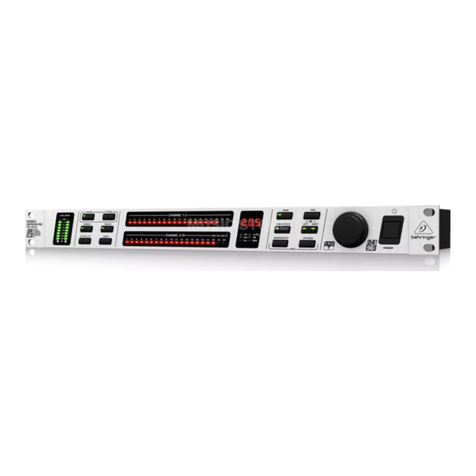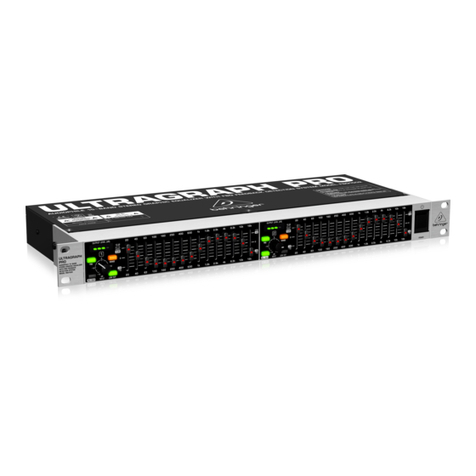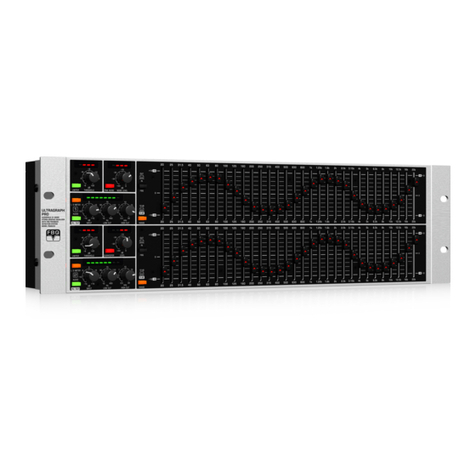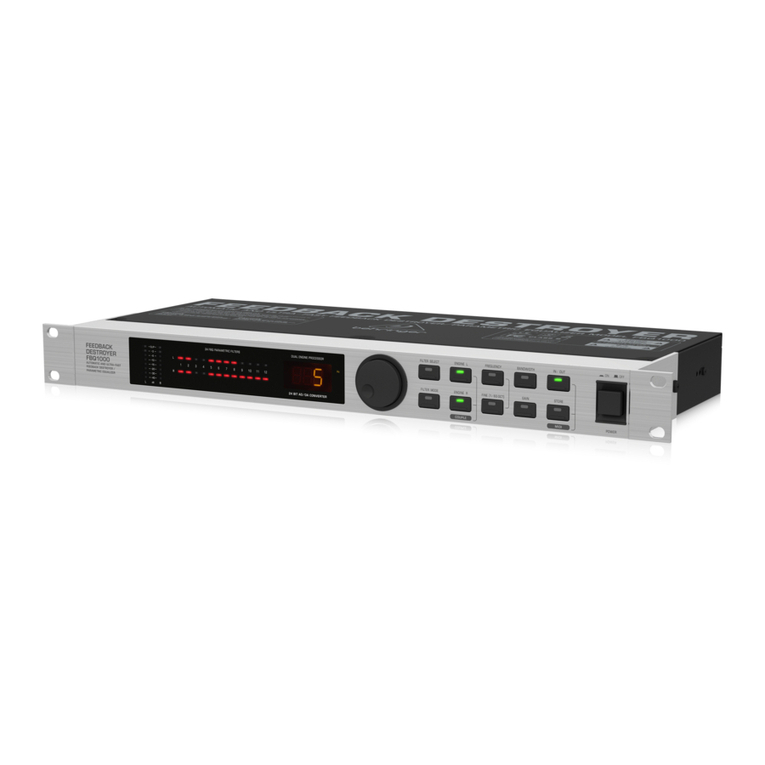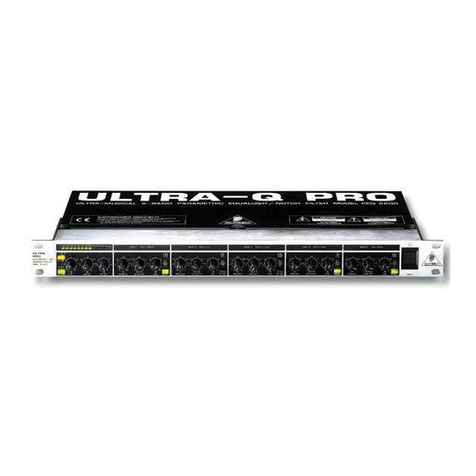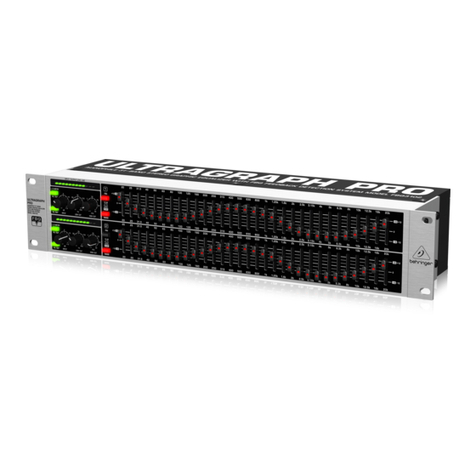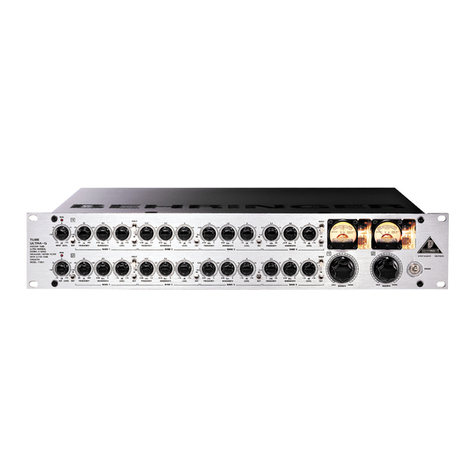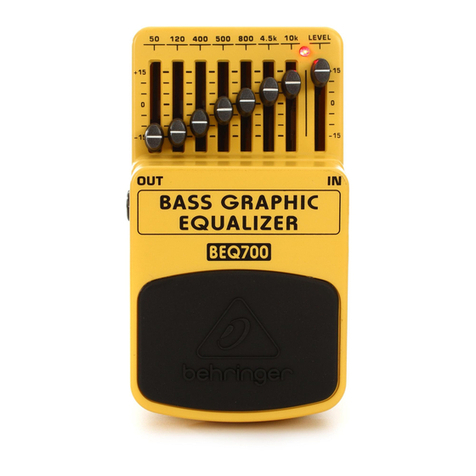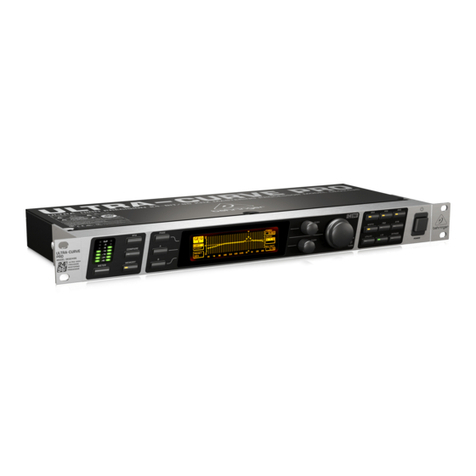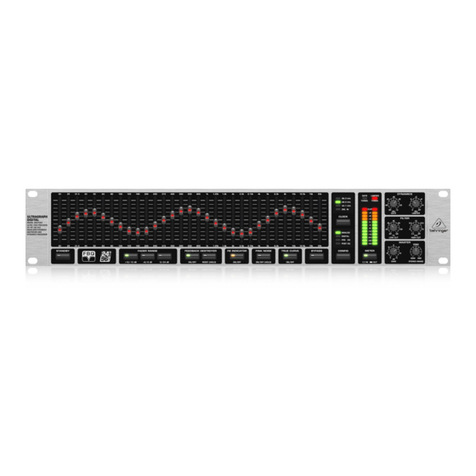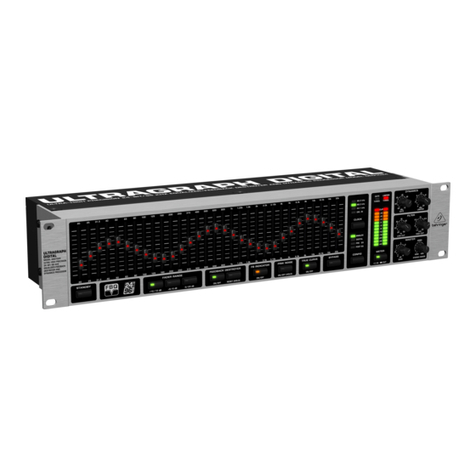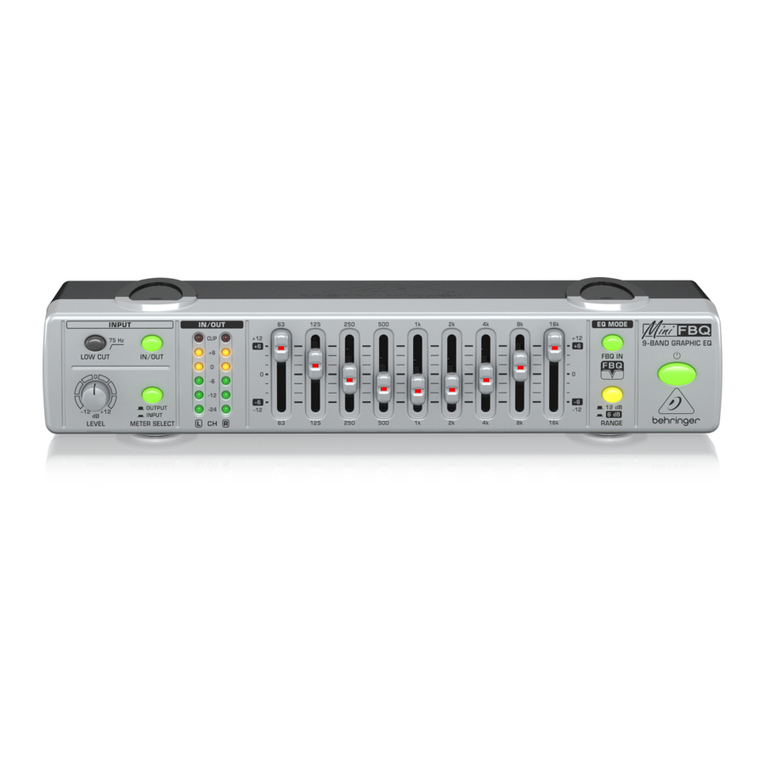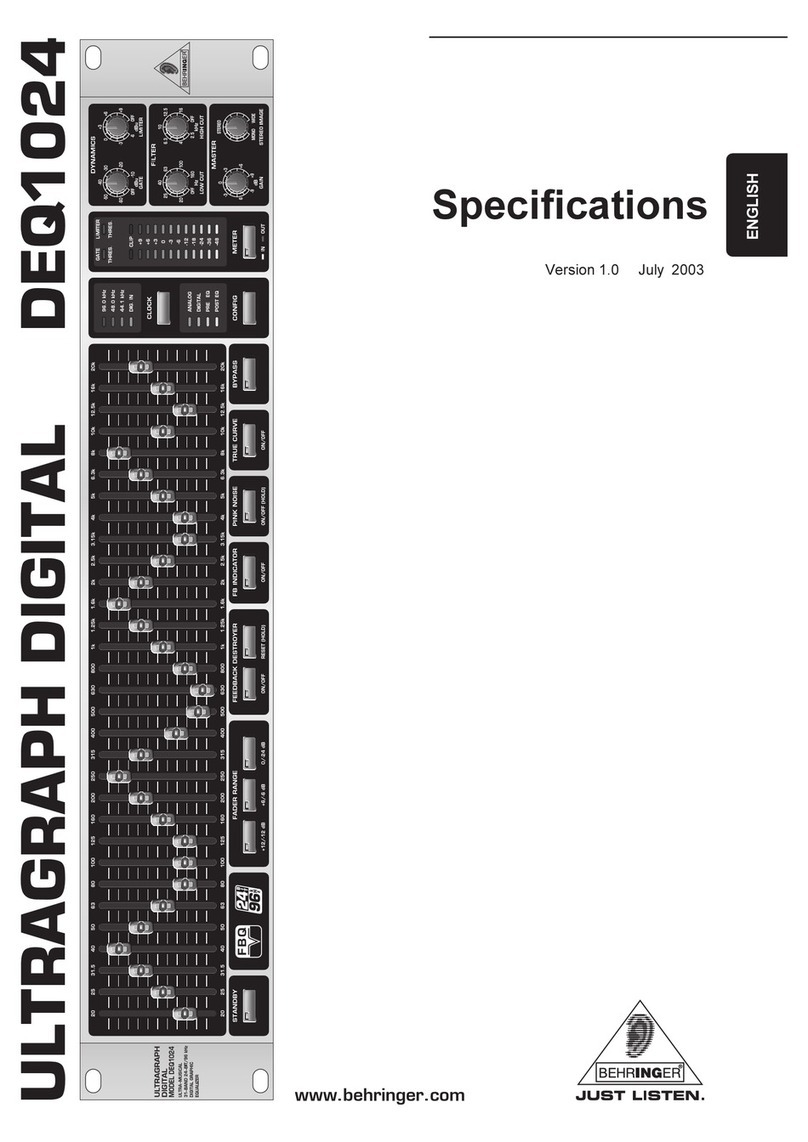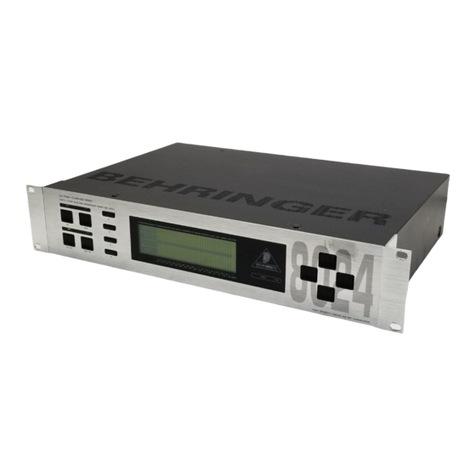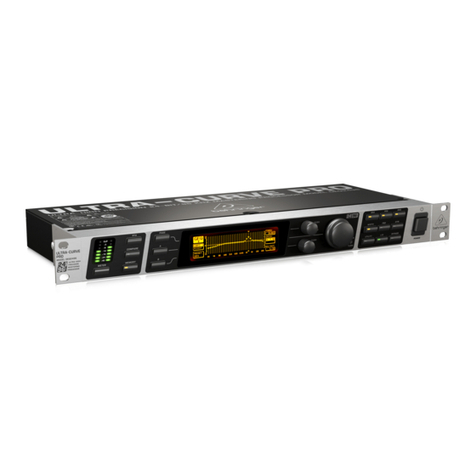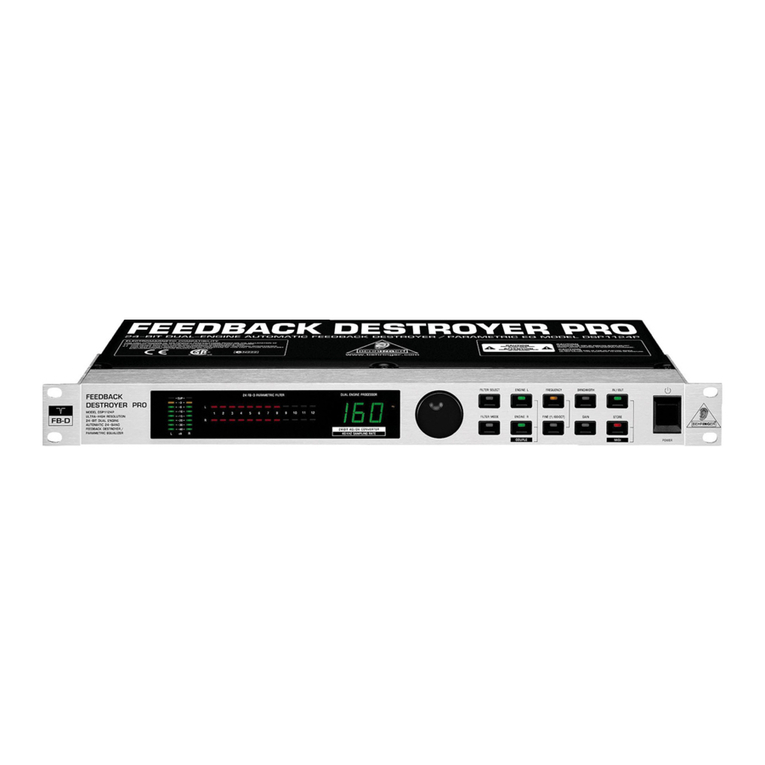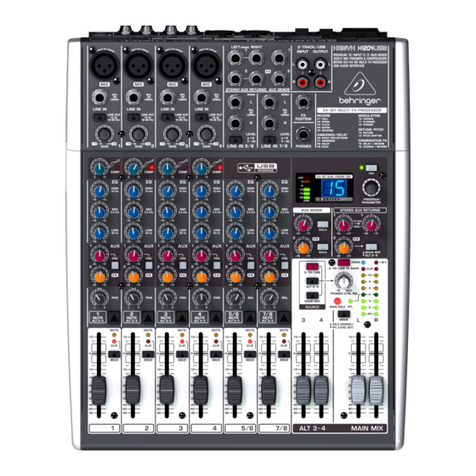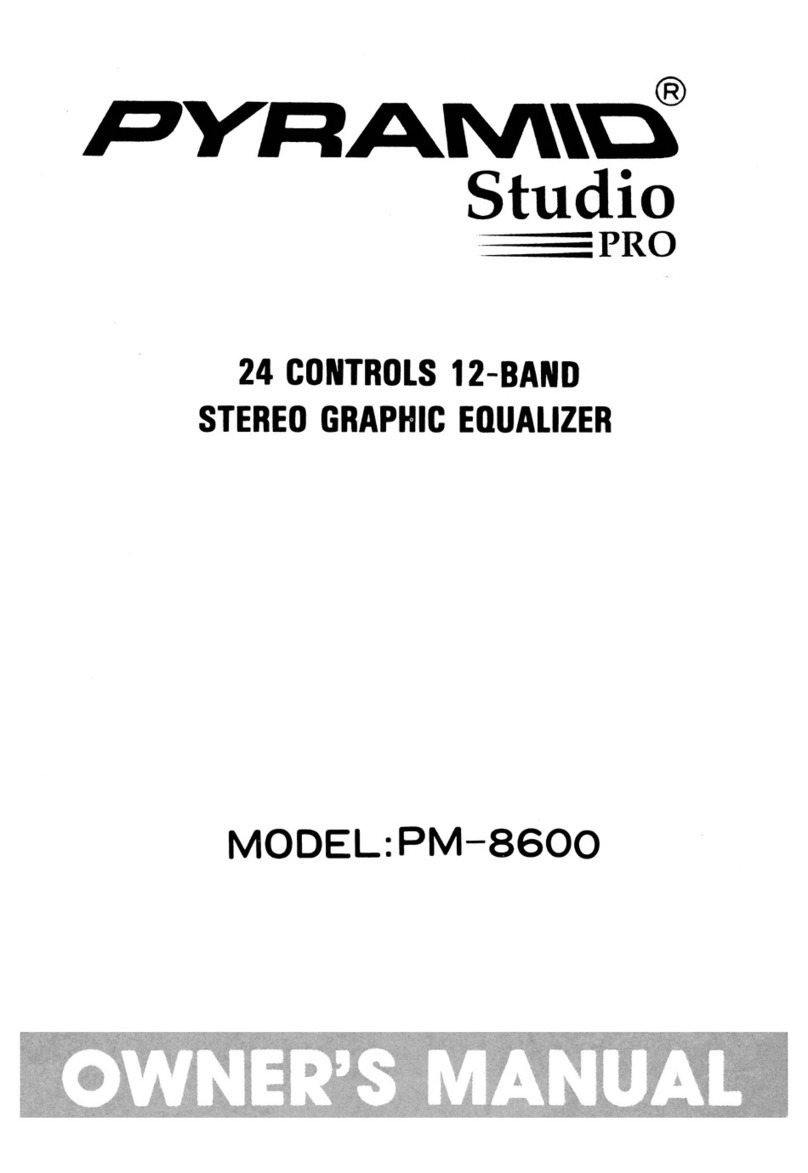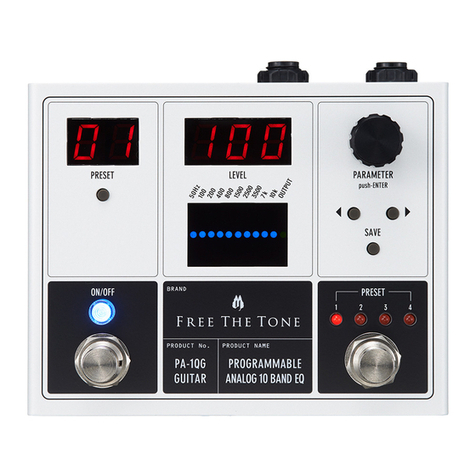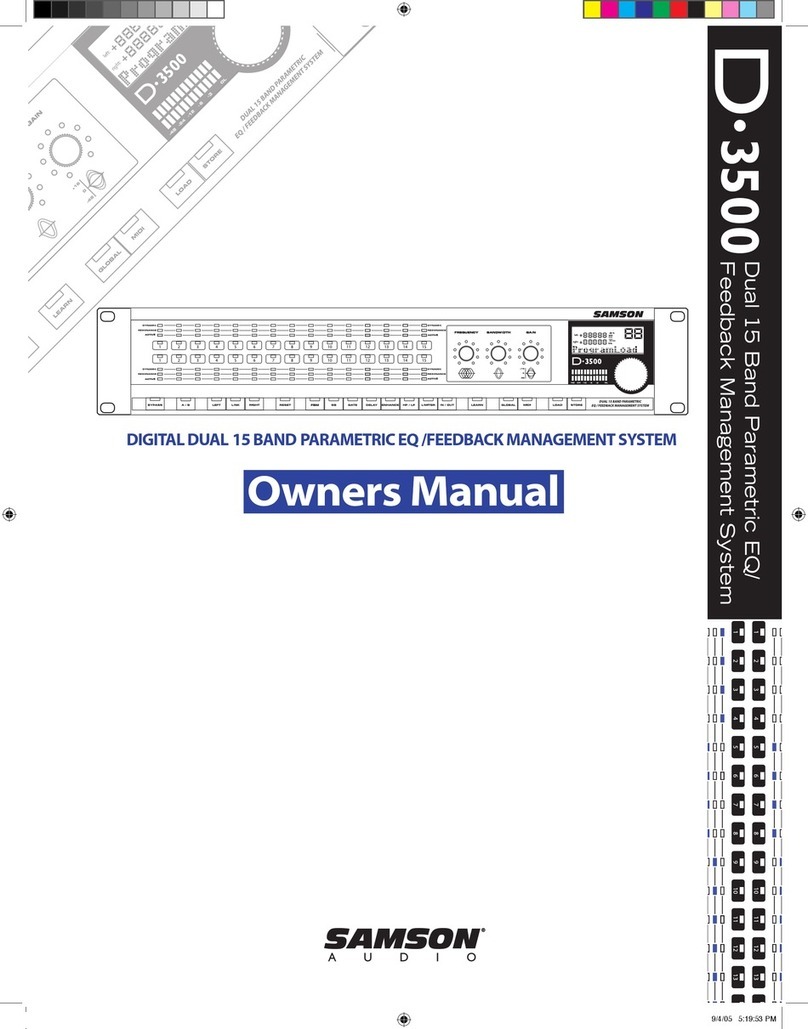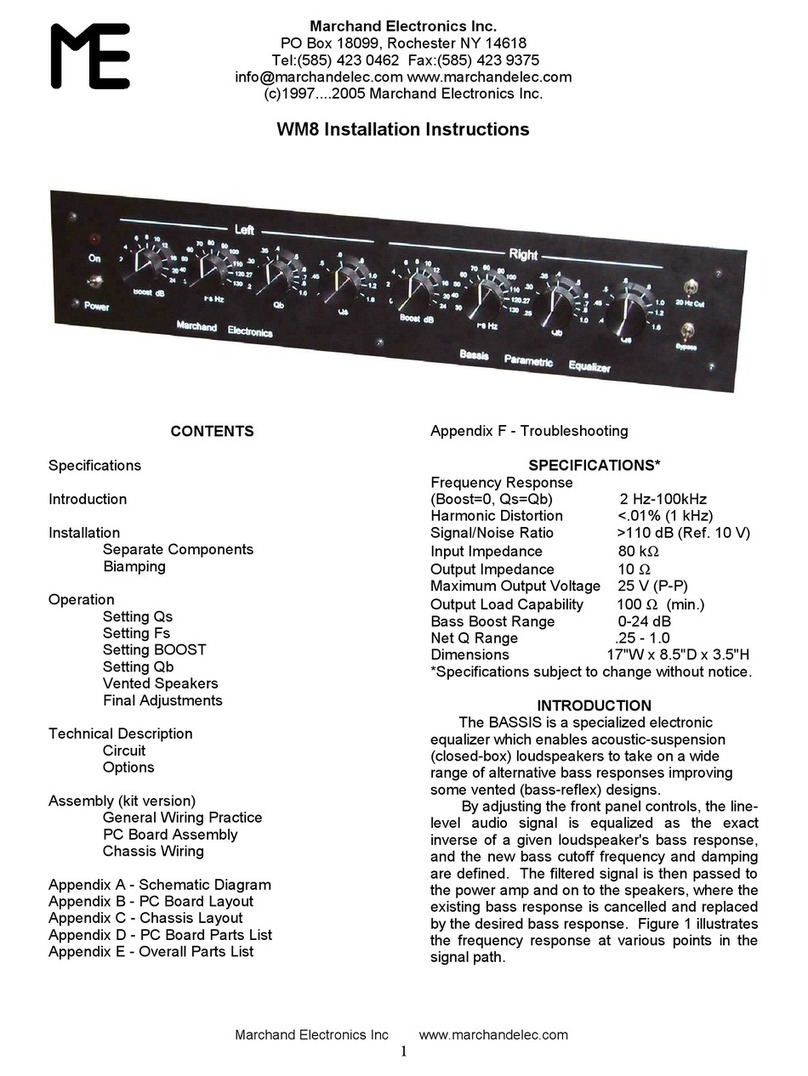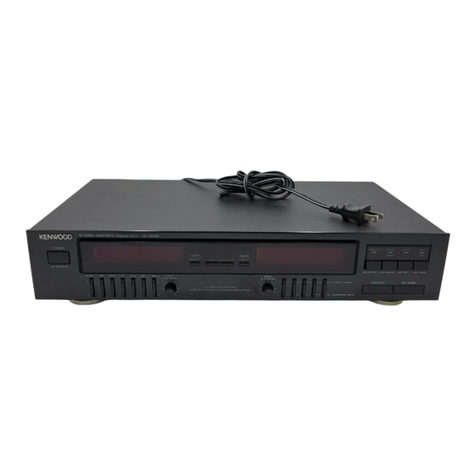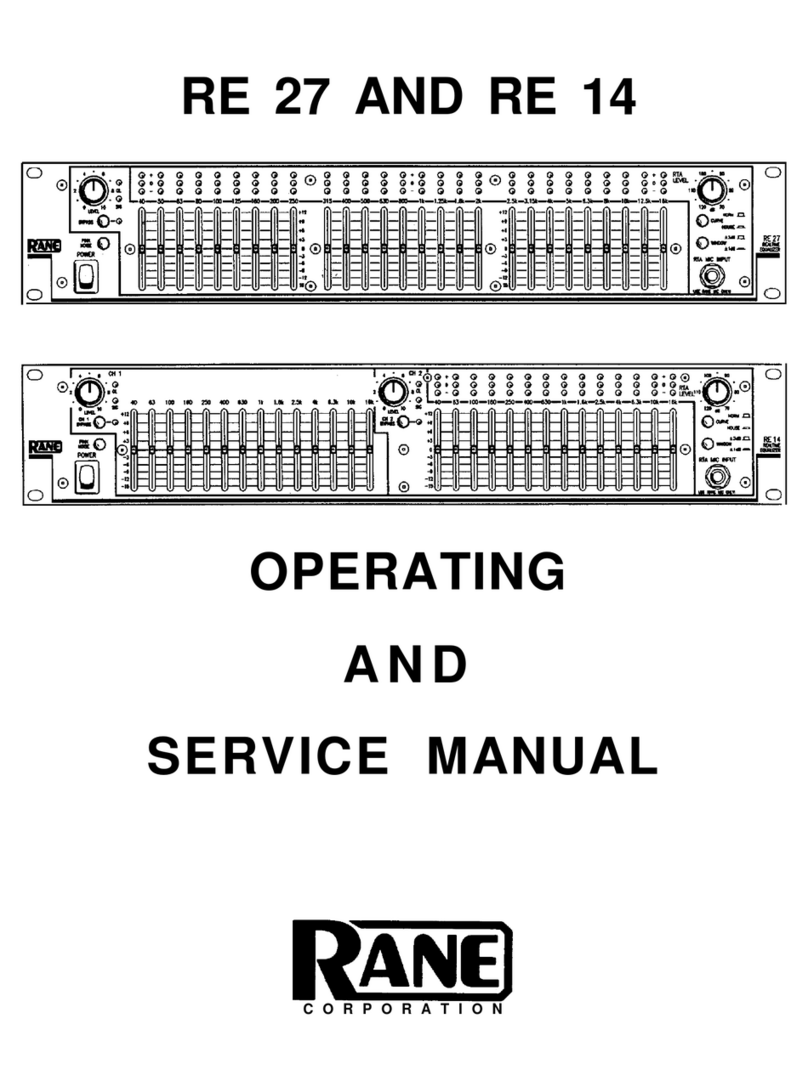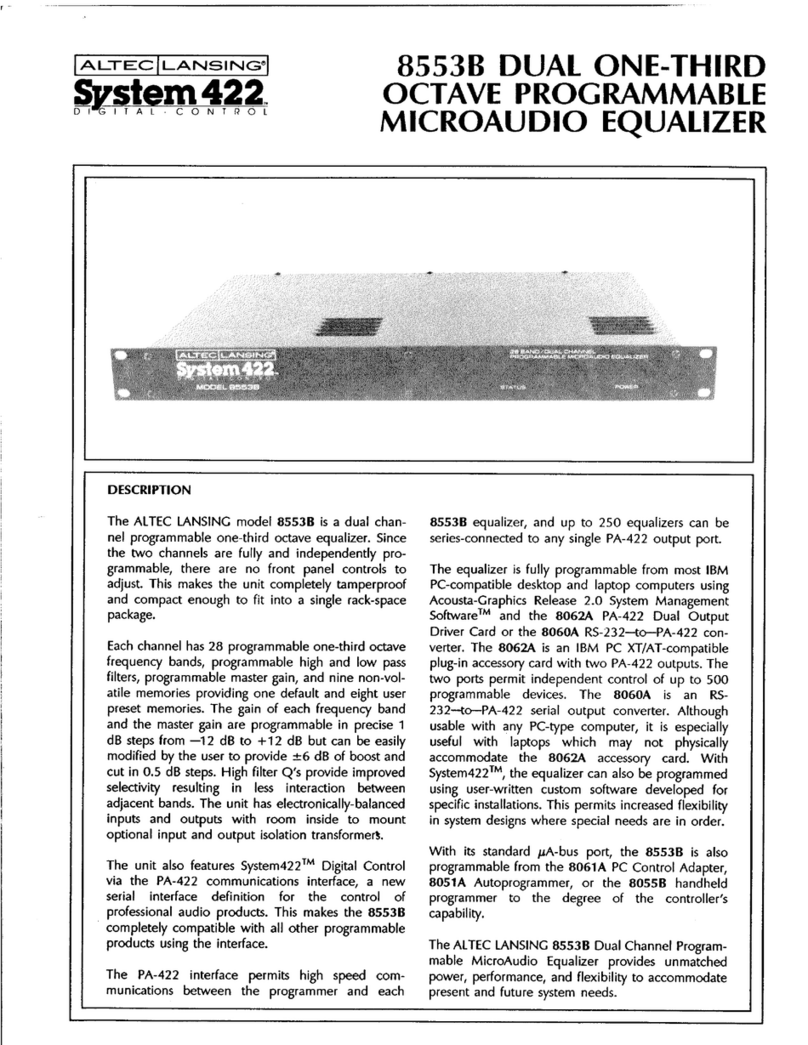6
TUBE ULTRA-Q T1951
1. INTRODUCTION
With the BEHRINGER TUBEULTRA-Q T1951 ou have purchased an innovative device. Parametric equalizers
represent the most advanced form of equalization s stems. With the TUBEULTRA-Q ou have purchased an
extremel musical and flexible device. Our ULTRA-Q range of devices has been a hit ever since we introduced
our first model some 5 ears ago. This high-end parametric equalizer is based on man ears of experience
and findings in equalizer technolog and is used throughout the world in renowned studios, sound reinforce-
ment s stems as well as in broadcast and television studios. Improving the legendar ULTRA-Q even further
was a real challenge, and we are proud of our success. The BEHRINGER TUBEULTRA-Q meets highest
requirements in terms of operation, sound, specifications and workmanship.
Even at the conception of the TUBEULTRA-Q it was clear that we had to combine the outstanding technical
specifications of our ULTRA-Q with a warm tube sound. We are therefore proud to be able to present the
TUBE ULTRA-Q, a device featuring our newl developed UTC vacuum tube circuit combined with a no-
compromise approach. The newl developed UTC circuit provides subtle sound enhancement rather than
show effects processing. In particular, digital workstations can be considerabl enhanced in their sound
character. You are free to use the TUBEULTRA-Q before the recording sessions or later when ou mix down
the music ou recorded. You can also use it to brighten up entire MIDI productions or even movie sound
recordings and thus give them their finishing touch.
The philosoph behind BEHRINGER products guarantees a no-compromise circuit design and emplo s the
best choice of components. The op-amps, t pe 4580, used in the TUBEULTRA-Q are chosen for their superior
signal-to-noise ratio, low distortion and linear performance. Additionall , the TUBEULTRA-Quses high qualit
resistors and capacitors with ver tight tolerances, high-grade switches as well other selected components.
The TUBE ULTRA-Q is manufactured under ISO900 certified management s stem.
With the exception of two 12AX7/ECC83 tubes, the TUBEULTRA-Q T1951 is based on SMD technolog
(Surface Mounted Device). These subminiature components known from aerospace applications ensure both
extreme packing densit and greater reliabilit .
+Please keep the manual after reading, in order to use it for future reference.
1.1 The concept
The heart of the TUBEULTRA-Q is an extremel low-noise and transparent sounding state-variable filter. In
combination with the Constant-Q principle, the 4580 op-amp and the newl developed ULTRA-TUBE
technolog , the TUBEULTRA-Q achieves extremel low noise and distortion figures together with an
incredible warm sound. With four full parametric bands, it offers ou trul professional signal processing.
In the TUBE ULTRA-Q, two selected 12AX7 / ECC83 vacuum tubes are used. These triodes are capable of
handling a large d namic range with little microphon . In addition to that their relative ruggedness and above
average life span and ou can see wh its one of the most popular and reliable pre-amp tubes on the market.
These features also ensure ou their availabilit for man ears to come.
Failsafe rela s have been incorporated into the design of the BEHRINGER TUBE ULTRA-Q, which auto-
maticall and silentl b pass the unit in the event of power suppl disconnection or failure. These rela s are
also active at switch-on to isolate the TUBE ULTRA-Q until the power rails have settled, thus preventing the
possibilit of a potentiall damaging switch-on thump.
1.2 Before you get started
Your BEHRINGER TUBE ULTRA-Q was carefull packed in the factor and the packaging was designed to
protect the unit from rough handling. Nevertheless, we recommend that ou carefull examine the packaging
and its contents for an signs of ph sical damage, which ma have occurred in transit.
+If the unit is damaged, please do not return it to us, but notify your dealer and the shipping
company immediately, other ise claims for damage or replacement may not be granted.
Shipping claims must be made by the consignee.
The BEHRINGER TUBE ULTRA-Q fits into two standard 19" rack units of space. Please allow at least an
additional 4" / 10 cm depth for the connectors on the back panel.
1. INTRODUCTION
